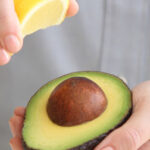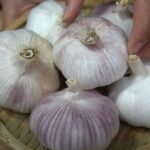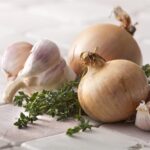1 Cook Chicken with Salt Crystals
 Cook Chicken with Salt Crystals
Cook Chicken with Salt Crystals
First, clean the chicken and cut it in half, or leave it whole. Place it in a colander to drain. Next, spread a thick layer of salt at the bottom of a pot and place the chicken on top. Cover the pot, turn the heat to low, and cook for 40-50 minutes. When you start to smell the aroma, uncover and check if the chicken is cooked to your liking. If not, continue cooking with the lid on.
Cooking at a high temperature, the salt layer emits heat that helps cook the chicken more thoroughly and gives it a softer texture. This method also prevents the chicken skin from sticking to the bottom of the pot. You can use the same technique in a rice cooker, ensuring the lid is kept on to maintain heat and moisture for even cooking.
2 Lemongrass and Kaffir Lime Leaves for Chicken Cooking
 Lemongrass and Kaffir Lime Leaves for Chicken Cooking
Lemongrass and Kaffir Lime Leaves for Chicken Cooking
Clean the chicken and leave it whole; do not cut it into pieces. Using a mortar and pestle, pound together some salt, green bird’s eye chilies, and shallots. Rub this mixture all over the chicken. Spread a thick layer of salt crystals at the bottom of a deep pot and add the bruised and cut lemongrass. Then, place the kaffir lime leaves on top, followed by the chicken.
Add more kaffir lime leaves on top and cover the pot. Steam for about 60 minutes without lifting the lid too often, as this will cause heat loss and increase cooking time.
3 Garlic-Infused Chicken
 Garlic-Infused Chicken
Garlic-Infused Chicken
Peel and clean the garlic cloves, then spread them evenly across the bottom of the pot. Stuff the chicken cavity with garlic and place it in the pot. Cover and cook over medium heat for 20 minutes without lifting the lid. This method results in tender, sweet meat without an overpowering garlic flavor.
We hope that with these cooking methods, you can create delicious chicken dishes to treat your family. Good luck with this recipe!
The Ultimate Guide to Delicious, Fresh and Tasty Mudfish: Say No to the Fishy Smell!
The humble braised mudfish is a delicious and mouthwatering dish, a true staple in any family meal. To prepare a pot of braised mudfish that is not bitter and tastes absolutely divine, it is essential to start with live, fresh mudfish. Removing any bitterness and carefully selecting the right spices for marination and cooking will ensure a flavorful dish.
The Culinary Magic of Lemons
Sure, I can assist you with that.
“You probably already use lemons to make refreshing summer drinks, but did you know they have a multitude of other uses in the kitchen? From preventing fruit discoloration to cooking vegetables and even peeling eggs, lemons are a true culinary multi-tasker. You’ll be amazed at the versatility of this citrus fruit and how it can enhance your daily cooking.”
The Magic Breath Saver: A Quick Fix for Overindulging in Garlic and Onions
Onions and garlic are the dynamic duo of spices that elevate any dish. Incorporating them into your daily cooking not only enhances the flavor but also offers a host of health benefits. Don’t worry about the lingering onion and garlic breath after indulging in these tasty treats, as there’s a quick fix to neutralize any potent aromas.





































